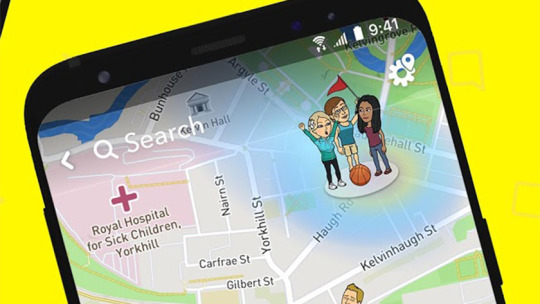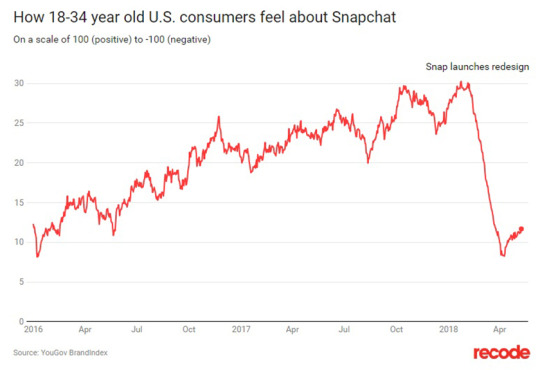
Snapchat has widely been criticized by its Android user base for its poor performance on Android. Indeed since its creation, the app had been on Android very sluggish, faced frequent crashes, and the picture and video quality wasn’t that. Compared to its iOS counterpart, the user experience on Android was poor. However, this is the past now. In 2017, Snap Inc. announced it will be working on the issue, bringing its Android version on par to its iOS version i.e., a cleaner, faster and less buggy experience on Snapchat for Android.
Frantically, Snap Inc. has known for three years it’s Android app had problems. Android users accounting for 80% of its user base, and following the decline in its daily Android users, Snap Inc. could no more ignore the problem. In April 2019, a completely rebuilt version was released, which brought a wind of renewal to one of the best social apps on Android.
To @Android. Love, Snapchat. #SnapForAndroid pic.twitter.com/MGOFQYa9Cj
Who’s Fault? The Startupper Mindset!
Like all companies, Snapchat started as a startup hence the workforce was scant. The developers could not focus on developing unique codes for each platform (Android and iOS). What they simply did was to write codes for iOS, and then transcribe them to Android. The goal was to make money and so the main objective at the time was to bring active users to the platform. Hence they sacrificed performance for growth reports the developers to FrAndroid.We were in startup mode and we wanted to be fast and efficient
Time to Get Things Right!
When complaints finally reached developers, the latter decided to work on it and an ameliorated version of Snapchat was released in 2017 which was unfortunately far from good.
The main issue of Snapchat for Android was that the whole code ran at once when the app was open. This implies all sections of the app be it messages, camera, Snap Map, filters, augmented reality and discovery just to names these, all ran in the background. For low and middle-end smartphones with low RAM space and slower processors, this was harsh. This negatively affected the user experience. The code was too congested and implementing new features revealed to be an obstacle course; a full rewrite was therefore necessary.
What the developers did was to take an “end-to-end modular” approach on Android. This means that sections of the app only ran if requested and not all at once. This leads to a boost in the overall performance of the app, especially on low-end devices - with a 20% reduction in the time needed to launch the app.
[Android devices] don’t all behave the exact same way, right? It’s very easy for us to build an Android app that will work well on flagship devices like the Pixel 3. It’s more challenging when you have to capture the whole ecosystem, especially when the camera works very differently from manufacturer to manufacturer
I tested this new version and I can guarantee there has been a huge improvement compared to the previous versions. The app is indeed much faster, less buggy and I didn’t experience any crash. Navigating through the app is relatively fluid and FINALLY the camera quality on the app honors our cameras configuration, as Snapchat is now configured to exploit our various cameras capabilities on Android - Snapchat now runs on a broader set of test devices to ensure current and future updates all work, as expected, told Jerry Hunter (Senior Vice-President for Development) to Android Authority.
Basically, it’s everything that users have been asking about, with some added bonuses for the developers as wellHere is a comparison of the old and new Snapchat business insider did:

Google Had and Will Play a Big Role Still
If Snapchat was able to make this rebuilt possible, it is also thanks to Google’s new libraries that facilitate the development of codes running on low resources. Very soon, Snapchat may even become better thanks to Google’s new camera API, CameraX. Announced at the I/O 2019, CameraX will allow Android apps to fully control cameras equipped on our Android smartphones, in just two lines of codes. This literally means that apps like Snapchat will be able to offer the same options found on our cameras app. Snapchat, for example, will be able to offer the x5 zoom on the latest OnePlus 7 Pro or even the x50 zoom of the Huawei P30 Pro but also portrait mode and night mode offered on various devices just to name these.Visually, there will be no major change in this new version. “Our ideal goal was that people shouldn’t really notice that the app is actually entirely changed up from underneath them except everything should be way faster,” Jacob Andreou Android Authority. He even highlights Snapchat for Android may see new features before its iOS counterpart, as this new version has become their developer’s favorite playground. The next step for Snapchat now is to work closely with Google and Apple to bring more AR features.
With this new foundation, I wouldn’t be surprised if you actually see things starting to come to Android even before iOS sometimes. Android will be becoming a place where we are really testing our latest and greatest stuff which has definitely not been the case historically

With this, Snapchat hopes to bring back its lost users as well as new ones to its platform. With 186 million daily active users against 1 billion for Instagram in 2018, the platform has a long way to go to get back its users lost to Instagram. Despite this rebuilt, Snap Inc. still faces backlash from Android users who feel “cheated”. They accused Snap Inc. to have waited up to six years to finally realize they had Android users who mattered. As to whether or not Snap will become everyone favorites, only time will tell, but for now, Snap Inc. stock price has remained positive for the past months. As for me, I am pretty happy about this update and will soon get back to uploading more Snaps.








No comments:
Post a Comment